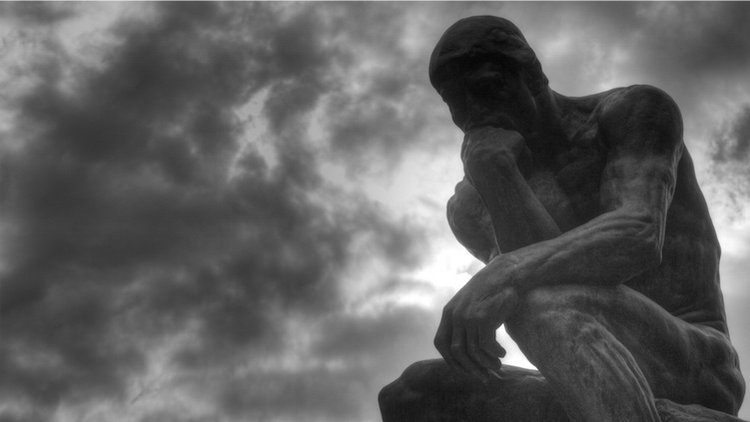Thinking: The Missing Link
SCIENCE - SPIRITUALITY, 4 Apr 2016

Thomas Edison said that five percent of people think, ten percent think they think, and the other eighty five percent would rather die than think. Thinking is hard work – that’s why so few people genuinely do it.
Photo Credits: www.theonedayroad.com
Last few days in India. With no local SIM card and patchy internet access, I’ve been ‘off the grid’ for the best part of the month.
A blessing indeed. When the external world becomes a distant reality, it helps bring the internal life back into focus. Re-aligned and refreshed; reminded of what really matters, where to focus my attention, and how issues and problems grow fainter on the backdrop of the bigger picture.
But how long will this vision last? I dread to think of how I’ll get covered over again, settling back into old patterns, bad habits, character frailties and the same deep-rooted struggles.
How does inspiration turn into transformation? What does it take to cash in on this spiritual wealth that we gather? Why do striking moments of insight inconspicuously fade away upon re-entering the routine of life?
Yoga Science explains three key stages of transformation:
1 – Sravanam – Receiving insight & inspiration
2 – Mananam – Deep contemplation & reflection
3 – Nididhyasanam – Practical realistion & application
Self-development gurus urge us to seize those moments of inspiration and immediately translate them into tangible goals and concrete outcomes. Use it or lose it; without immediate practical action, they say, the bulb will eventually dim down. That approach, however, neglects a crucial link: reflection and contemplation. To maximise, internalise, and really translate our inspirations and insights, there is a need for deep contemplation on them.
People think they think too much. But are we truly thinking? I’m not talking about dreaming, worrying, lamenting, planning or judging, but real thinking; sitting down with an open mind and searching for truth, answers, clarifying thoughts and inspiration, and genuinely, deeply, discovering the best way forward.
Thomas Edison said that five percent of people think, ten percent think they think, and the other eighty five percent would rather die than think. Thinking is hard work – that’s why so few people genuinely do it. Yet that missing link is critical. In these precious few days, I’m trying to write down whatever revelations I’ve received – to see them on paper, question them, edit them, refine them and crystalise them. I’m hoping that the assault of sustained thinking will embed essential truths into a deeper space within my consciousness. This, often times, is the missing link; an invisible investment that yields immeasurable interest.
Go to Original – iskconnews.org
DISCLAIMER: The statements, views and opinions expressed in pieces republished here are solely those of the authors and do not necessarily represent those of TMS. In accordance with title 17 U.S.C. section 107, this material is distributed without profit to those who have expressed a prior interest in receiving the included information for research and educational purposes. TMS has no affiliation whatsoever with the originator of this article nor is TMS endorsed or sponsored by the originator. “GO TO ORIGINAL” links are provided as a convenience to our readers and allow for verification of authenticity. However, as originating pages are often updated by their originating host sites, the versions posted may not match the versions our readers view when clicking the “GO TO ORIGINAL” links. This site contains copyrighted material the use of which has not always been specifically authorized by the copyright owner. We are making such material available in our efforts to advance understanding of environmental, political, human rights, economic, democracy, scientific, and social justice issues, etc. We believe this constitutes a ‘fair use’ of any such copyrighted material as provided for in section 107 of the US Copyright Law. In accordance with Title 17 U.S.C. Section 107, the material on this site is distributed without profit to those who have expressed a prior interest in receiving the included information for research and educational purposes. For more information go to: http://www.law.cornell.edu/uscode/17/107.shtml. If you wish to use copyrighted material from this site for purposes of your own that go beyond ‘fair use’, you must obtain permission from the copyright owner.
Read more
Click here to go to the current weekly digest or pick another article:
SCIENCE - SPIRITUALITY: